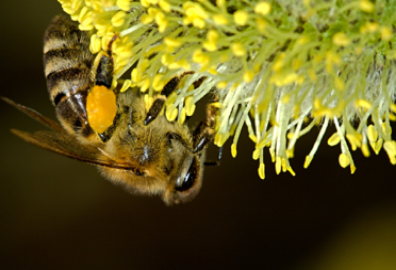It can’t be overstated just how beneficial bees are to our ecosystem. Bees pollinate an astonishing 80 percent of the world’s plants, including fruits and vegetables that feed up to 90 percent of the world’s population. Certain nuts and beans would likely go completely extinct, as well as fruits like blueberries and cherries which are almost entirely pollinated by bees. Meat
scarcity could arise as cattle feed on pollinated plants, and some common medicines may become difficult if not impossible to manufacture. Life as we know it (especially in Southern Utah) would become a lot harder to maintain without our friend, the bumble bee. Given the importance of bees, then, how do you take care of other pests around your home without putting bees in danger? And what happens if the bees themselves are acting like pests? Here are a few ways to keep your home safe and pest-free while ensuring that you don’t put bees in harm’s way.
- Maintain Your Yard
One great way to get rid of pests without running the risk of hurting bees is to keep your yard maintained. Keep flower beds free of weeds, mow the grass as needed to keep it from getting overgrown and fill in any holes that you find. This helps eliminate cover and potential nesting places for unwanted pests including wasps and yellow jackets. It will also keep weeds under control which might otherwise provide both food and shelter for these pests. - Remove or Contain Attractants
Trash cans, outdoor pet food, spilled sugary drinks and other food sources can attract a lot of pests to your property. As much as possible, try to cover or remove these attractants so the
pests don’t arrive in the first place. If you can’t completely remove the items (such as in cases where you have pets who live outside and need food and water), try creating an enclosure for the items or elevating them on stands so they don’t make direct contact with the ground. - Study Pesticide Options
There are some pesticides which aren’t toxic to bees but are still effective when used against other pests. Substances such as gibberellic acid pesticides, corn gluten and pesticides made using bacillus thuringiensis (BT) are not toxic or agents of disease for honeybees, provided they aren’t used in excessive doses. If you need to use a pesticide, research bee-friendly options and apply them late in the evening when bees are most likely to be back in their hives so that you
don’t accidentally spray pollinating bees with large doses of chemicals. - Avoid Catch-All Traps or Baits
It may be tempting to use items such as wasp traps or baits designed to attract certain insects, but these are indiscriminate and can kill bees as well. Traps are especially harmful as the attractants they use to draw in wasps and flies may also attract bees who think that they are
detecting flowers in bloom. - Find a Local Beekeeper
If bees themselves are the problem, don’t try to get rid of them yourself. Find a local beekeeper or honey producer and let them know that you’ve found a beehive or have a number of bees on your property. They’ll come and locate the hive, capturing the bees and their queen safely so that they can be moved to a safe hive away from your home. This will not only keep you and your family safe from bee stings, but it will keep the bees safe, healthy and happy as well.

Owner
(435) 628-1678
